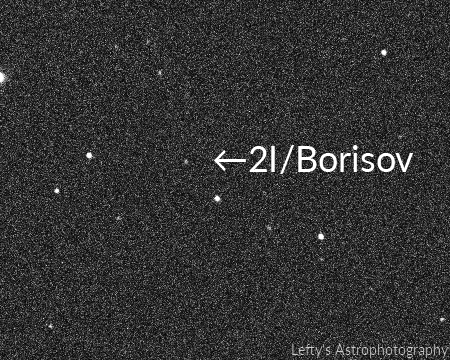
Astronomers have long suspected that celestial bodies from other solar systems traverse through ours frequently. However, it is only recently that they have been able to identify some of these interstellar objects. The first, a remarkably fast-moving comet dubbed 'Oumuamua, was already making its way back home by the time it was spotted in October 2017, giving scientists little chance to study it in detail. Now, thanks to the sharp eyes of an amateur astronomer in Crimea, scientists will get a second chance to investigate similar comets with C/2019 Q4 (Borisov), which is currently making its way to our solar system.
Gennady Borisov first noticed the alien comet using his self-built telescope on August 30, 2019. The amateur astronomer, who has discovered other new comets within our solar system, initially thought it was heading straight towards Earth. However, a week of observations by professional and amateur astronomers, which helped chart the object's trajectory, showed that Borisov's fear was unfounded. More excitingly, it helped the scientists determine that the comet was a visitor from another solar system!
"The comet's current velocity is high, about 93,000 mph (150,000 kph), which is well above the typical velocities of objects orbiting the Sun at that distance," said Davide Farnocchia, of NASA's Center for Near-Earth Object Studies. "The high velocity indicates not only that the object likely originated from outside our solar system, but also that it will leave and head back to interstellar space." Another giveaway of the object's alien status is its extremely elliptical trajectory, which indicates that unlike objects in our solar system, C/2019 Q4 is not revolving around the sun at all.

The celestial rock's status was confirmed on September 24, 2019, by the International Astronomical Union (IAU), a consortium of 13,500 professional astronomers from more than 100 countries worldwide. The press release said, “The orbit is now sufficiently well known, and the object is unambiguously interstellar in origin; it has received its final designation as the second interstellar object, 2I. In this case, the IAU has decided to follow the tradition of naming cometary objects after their discoverers, so the object has been named 2I/Borisov.”
Though already visible, the comet will appear brightest in mid-December when it makes its closest approach to the sun — a distance of about 190 million miles (300 million kilometers) — nearly twice the average distance of the Earth from the sun. Experts say unless it breaks apart, the biggest and most powerful telescopes will be able to view the visitor until mid-October of 2020. “Early observations will help us decide better what additional observations are needed to best understand it, so we should be able to learn a lot more, without the immediate rush that we had with the previous one,” says Robert Weryk, an astronomer at the University of Hawaii.

Astronomers hope the findings will help them determine what star system 2I/Borisov hails from. They are also curious to know the comet's composition and if it possesses materials not found in our celestial objects. “This will be particularly exciting to see if the chemistry is the same as comets in our solar system,” says University of Hawaii astronomer Karen Meech.
For those afraid the back-to-back appearance of the alien objects indicates the start of an interstellar invasion, there is a more straightforward explanation. Experts believe the objects were probably tossed out of their original solar systems by powerful gravitational forces from massive, planet-like objects!
Resources: theAtlantic.com, technologyreview.com, iau.org
